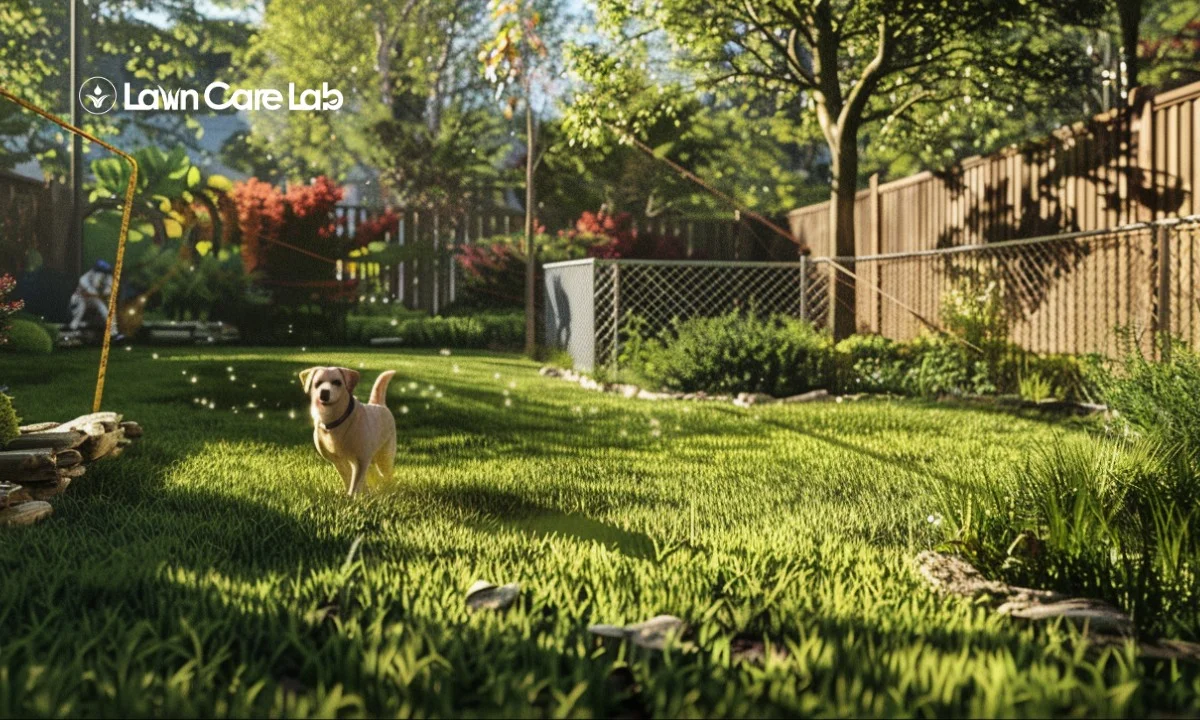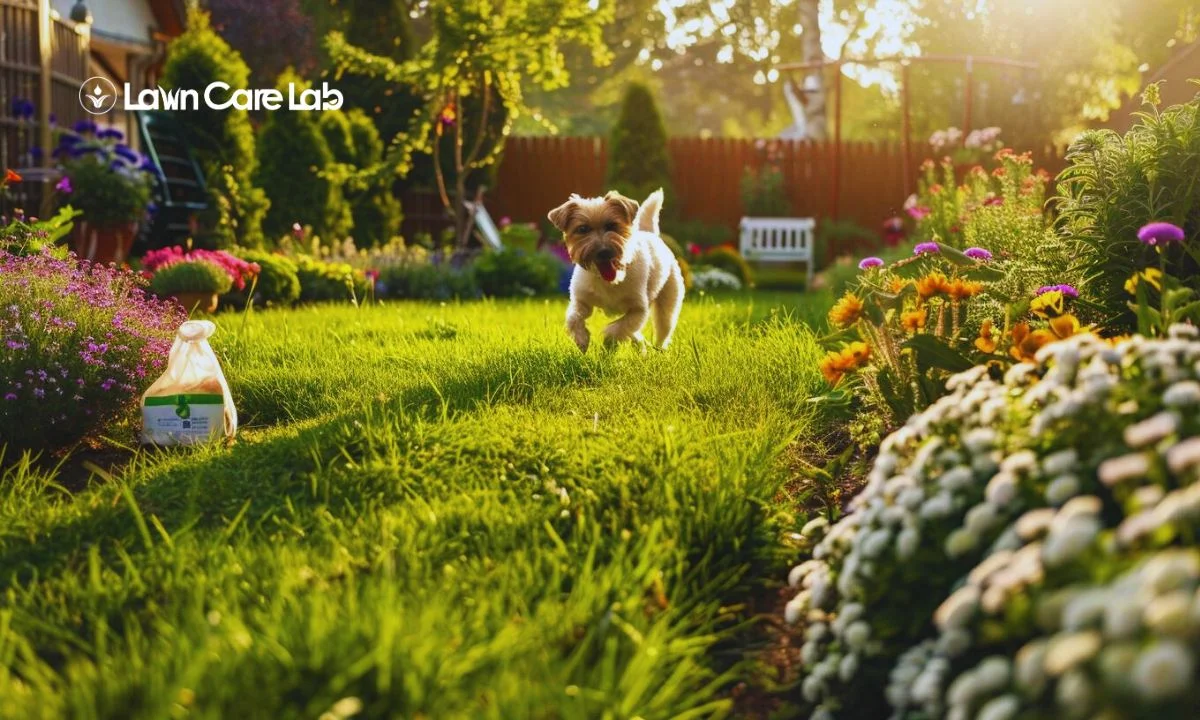Finding the right ground cover for your dog run is crucial if you want a happy dog and home. Luckily, you’re in the right place!
Find the best ground cover for your dog run, keeping both safety and fun in mind. Create the perfect environment for your furry friend!
Table of Contents
Introduction to Dog Run Ground Cover
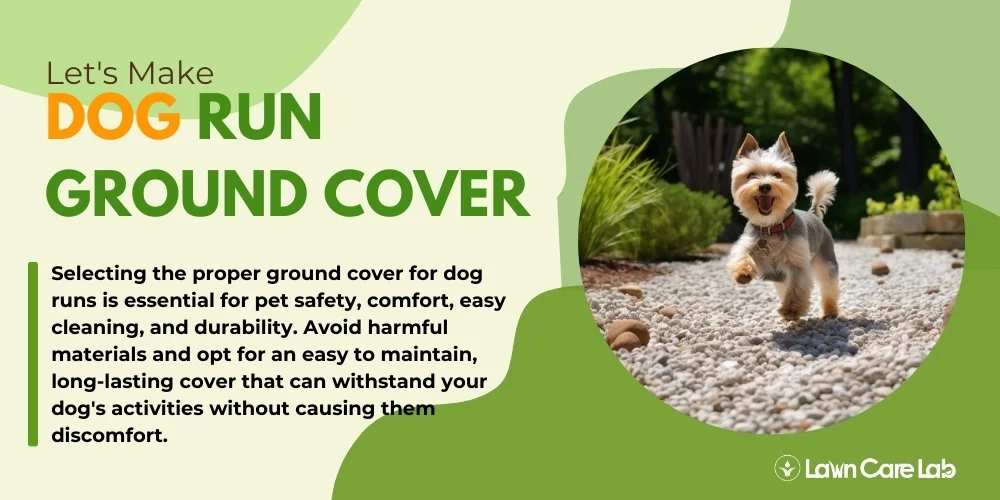
Many alternatives, from gravel to crushed limestone, suit your pet’s requirements.
Choose the right ground cover for your dog’s comfort and low maintenance. Here are some great options to consider.
Importance of the right ground cover for dog runs
Choosing the right ground cover for your dog run is crucial for your pet’s safety and comfort, as well as for cleaning and durability.
Take into account these elements when picking out your ground cover:
| Elements | Significance |
|---|---|
| Comfort | Choose a ground cover that won’t cause your pet discomfort or harm. |
| Safety | Steer clear of materials that could potentially harm your pet, such as jagged gravel. |
| Maintenance | The ground cover should be straightforward to clean and keep in good condition. |
| Durability | Opt for a material that is capable of enduring your pet’s activities and has a long lifespan. |
Uncovering the Best Ground Cover for Dog Run
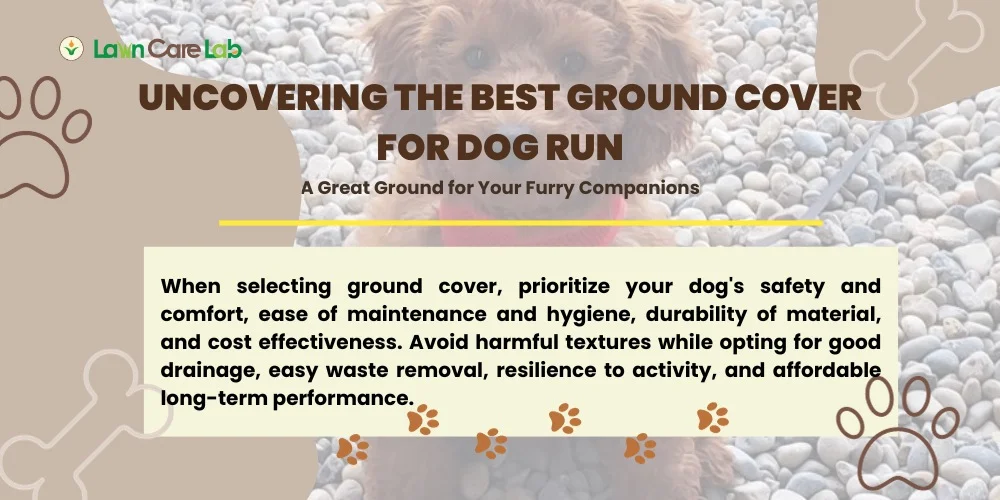
Let’s further investigate the optimal ground cover for your dog run.
Keep in mind the perfect solution may vary from one situation to another, hence it’s crucial to take into account certain important factors.
Factors to consider when choosing a dog run ground cover
Prioritize your dog’s comfort and safety, the simplicity of upkeep and hygiene, as well as the resilience and expense of the material.
Create a pet-friendly space that’s easy to manage and affordable.
Dog’s comfort and safety
Avoid slippery or paw pad-injuring materials. Look for good drainage, texture, and size.
Please refer to the following table for guidance:
| Material | Comfort Level | Safety Level |
|---|---|---|
| Sharp Rocks | Low | Low |
| Small Gravel | Medium | Medium |
| Soft Sand | High | Medium |
| Pea Gravel | High | High |
Make a thoughtful choice for your canine companion’s health and happiness.
Maintenance and cleanliness
Use light-colored materials and proper drainage systems to detect and remove waste easily.
Small gravels or sand can promote a cleaner environment by helping waste seep through.
Upholding the cleanliness and hygiene of a dog run is paramount for your pet’s well-being.
Now, we shall discuss the durability and cost-effectiveness of these materials.
Durability and cost
Consider long-term expenses versus initial costs when choosing durable and cost-efficient options.
| Material | Durability/Cost |
|---|---|
| Gravel | Excellent longevity, reasonable price |
| Crushed Stone | Outstanding durability, premium cost |
| Pea Gravel | Inferior durability, economical price |
| Crushed Limestone | Fair durability, premium cost |
A prudent decision can not only result in financial savings but also guarantee the well-being of your pet.
Exploring Various Dog Run Ground Cover Ideas

We will explore the pros and cons of using materials like gravel, crushed limestone, and rocks.
The goal is to discover a practical and comfortable solution for your canine companion.
Gravel for Dog Run: Pros and Cons
Opting for gravel in your dog run brings positive and negative aspects into play. Its robustness, exceptional drainage, and low maintenance are certainly appealing features.
Yet, it’s crucial to note that this choice could lead to discomfort for your furry friend – the gravel type can significantly impact the outcome.
Types of gravel suitable for dog runs
Pea gravel, featuring angular sizes ranging from 1/8 to 3/8 inches, is typically the most suitable type for dog runs.
The small, smooth stones allow drainage while resisting scattering. Proper installation and edging contain the pea gravel bed. Replenishing and raking maintain an even, safe surface that dogs enjoy.
Next, we’ll explore strategies for maintaining this type of gravel within your dog run.
How to maintain a gravel dog run
To keep your dog’s gravel run in top shape, it’s crucial to follow a regular maintenance schedule.
- Daily, clear away any fecal matter and urine.
- Once a week, use a hose to wash down the area to deter smell buildup.
- Biannually, turn over the gravel to promote efficient drainage.
- Ensure to uproot any weeds as soon as they appear.
- Every 2 to 3 years, inspect the drainage system and the weed barrier’s condition and rejuvenate the gravel.
Consistent upkeep of these tasks will result in a clean, secure, and comfortable environment for your pet.
Crushed Limestone for Dog Run: An Ideal Choice
Crushed limestone is a great choice for dog runs – it’s affordable, provides excellent drainage, and gives your pets good traction.
Some minor negatives may be mitigated with proper preparation and upkeep, making a dog-run surface convenient and easy to maintain.
Benefits of using crushed limestone in dog run
It ensures superior traction, discourages the growth of weeds, and presents a paw-friendly surface for your pet.
| Advantages | Specifications | Safety Aspects |
|---|---|---|
| Traction | Outstanding, even in damp conditions | Guarantees secure footing |
| Comfort | Less harsh than gravel | Safeguards paws |
| Weed resistance | Discourages weed proliferation | Reduces maintenance |
| Brightness | Maintains light hue | Improves visibility |
| Durability | Withstands erosion | Promises longevity |
Next, we will explore possible disadvantages and offer solutions to address them effectively.
Potential drawbacks and how to mitigate them
Opt for larger crushed limestone to ensure your pet’s comfort and reduce the need for frequent maintenance.
Incorporating a geotextile fabric can assist with weed management, and a gravel border will keep the limestone in place.
With these measures in place, let’s delve into the concept of utilizing rocks for a dog run.
Using Rocks for Dog Run: Is it a Good Idea
Rocks can be a hard-wearing and affordable option, yet they may pose several risks to your pet.
Different types of rocks used in dog runs
Various kinds of rocks can be used as ground cover in your dog run, each offering unique benefits and drawbacks.
- Jagged rocks: These are enduring but can potentially harm your pet’s paws.
- Small rocks: These have a tendency to move, leading to uneven surfaces.
- River rocks: These are typically smooth, offering a comfortable surface for your pet.
- Large rocks: These are safer options, being too large to present a choking hazard.
Sharp, jagged rocks used in pet areas can damage paws. Opt for smooth river rocks to maximize comfort and safety.
Gravel for Dog Kennel: A Versatile Option
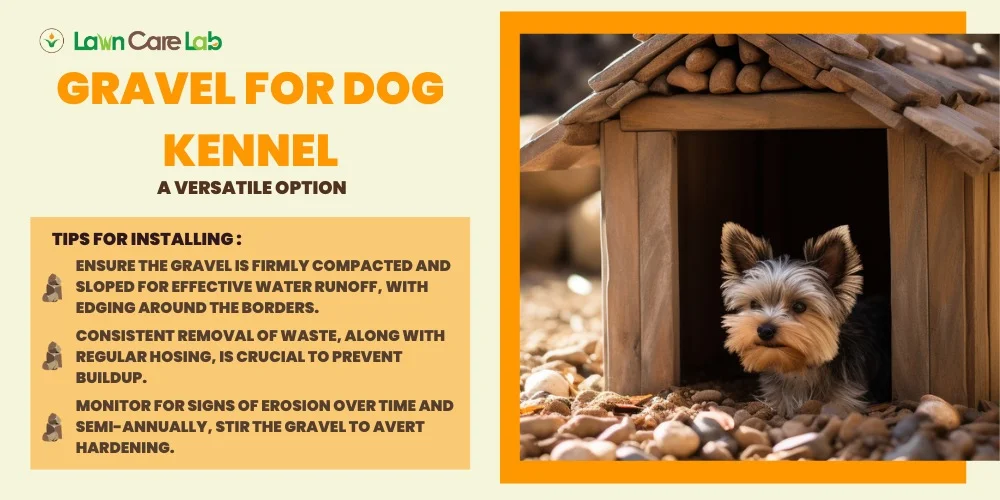
Gravel is a great option for dog kennels because it’s durable and easy to maintain.
Learn how to install and maintain gravel in dog kennels for your pet’s safety and well-being.
Why gravel is a popular choice for dog kennels
Gravel is ideal for dog kennels because it has excellent drainage, prevents bacteria growth, and controls odors for a healthier environment.
Another advantage of using gravel is that it reduces disinfection needs, decreases chemical exposure for dogs, and deters pests like fleas and ticks.
Tips for installing and maintaining gravel in dog kennels
Maintaining the quality of your kennel flooring can significantly enhance cleanliness, drainage, and odor control.
Ensure the gravel is firmly compacted and sloped for effective water runoff, with edging around the borders.
Consistent removal of waste, along with regular hosing, is crucial to prevent buildup.
Monitor for signs of erosion over time.
Semi-annually, stir the gravel to avert hardening.
Tips for Choosing and Installing Your Dog Run Ground Cover
To assist you, here are some key steps to follow:
- Select Your Material: Opt for larger-sized gravel, as it generally has superior durability and offers excellent traction for your pet.
- Groundwork Preparation: Dig around 4-6 inches deep and place a layer of landscape fabric, which aids in preventing weed growth and ensures a sturdy foundation.
- Gravel Installation: Tightly compress the gravel and give it a slight slope for effective drainage. To keep the gravel contained, edge the run’s perimeter with pavers or plastic lining.
- Upkeep: Regularly inspect for depressions and refill gravel as needed every few months. This promotes the dog run’s longevity and safety.
Conclusion: Choosing the Right Ground Cover for Your Dog’s Needs
When selecting a dog-run ground cover, prioritize comfort, safety, drainage, and ease of maintenance. Gravel, crushed stone, and rubber mulch are top choices to create a healthy play space.
Final thoughts on selecting the best ground cover for your dog run
Choose the best ground cover for your dog run with safety and comfort in mind.
- Opt for materials that prioritize your pet’s comfort and minimize the risk of injuries.
- The long-lasting nature of the materials is another critical factor that could lead to future savings.
- Ensuring proper preparation of the base and the edging isn’t a step to be overlooked.
- Striking a balance between a safe environment, ease of maintenance, and durability will lead to an exemplary dog run.
FAQs on Dog Run Ground Cover
What Are the Potential Health Risks for Dogs Associated With Different Types of Ground Cover?
How Often Should I Replace the Ground Cover in My Dog Run?
Can I Combine Different Types of Ground Covers in My Dog Run?
How Do I Maintain Cleanliness and Hygiene in the Dog Run With the Chosen Ground Cover?
Which Types of Ground Cover Are Best Suited for Dogs With Sensitive Paws or Allergies?
- How to Create a Lawn Care Schedule for Southern Climates - October 30, 2024
- How to Use Compost Tea to Boost Lawn Growth and Soil Health - October 23, 2024
- The Best Grasses for Saltwater-Exposed Lawns: Coastal Lawn Care - October 17, 2024


